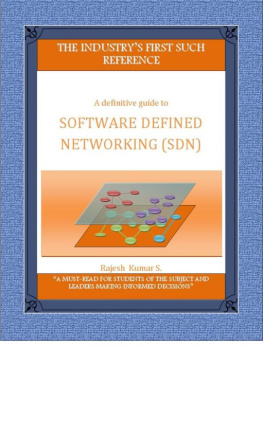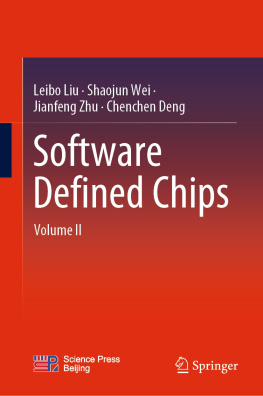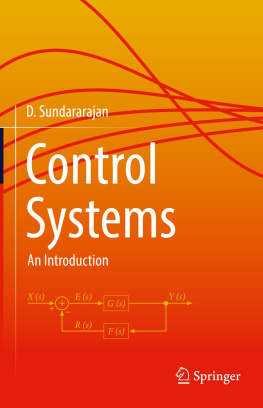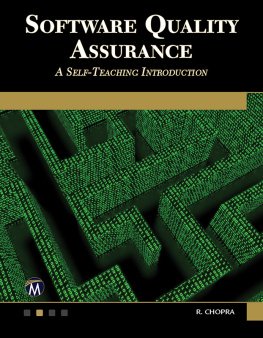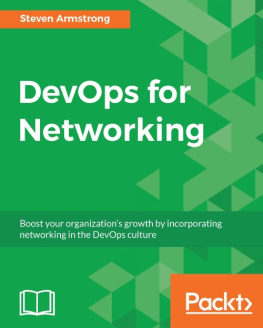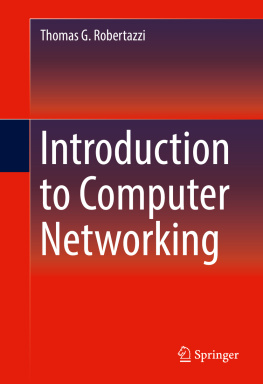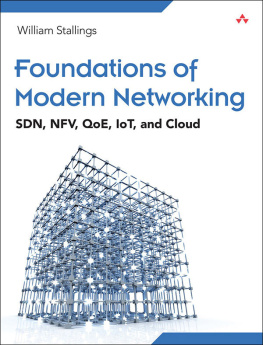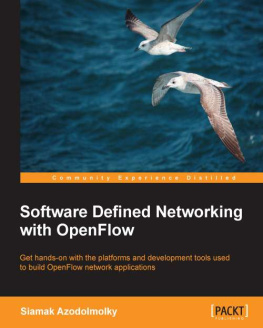50 / 50
Software Defined Networking - a definitive guide
Rajesh Kumar
Published by Rajesh Kumar at Smashwords
Copyright (c) 2013 Rajesh Kumar
***~~~***
All rights reserved. Without limiting the rights under copyright reserved above, no part of this publication may be reproduced, stored in or introduced into a retrieval system, or transmitted, in any form, or by any means (electronic, mechanical, photocopying, recording, or otherwise) without the prior written permission of the copyright owners. The authors acknowledge the trademarked status and trademark owners of various products referenced, which have been used with or without permission. The publication / use of these trademarks is not authorized, associated with, or sponsored by the trademark owners.
***~~~***
Smashwords Edition, License Notes
This ebook is licensed for your personal reading and reference only. This ebook may not be resold or given away to other people. If you would like to share this book with another person, please purchase an additional copy for each person you share it with. If youre reading this book and did not purchase it, or it was not purchased for your use only, then please return to the source and purchase your own copy. Thank you for respecting the hard work of the author and the publishers.
Preface
If you are trying to understand Software Defined Networking (SDN), this book is for you. If you are grappling with what it means to your business or organization so that you can make informed decisions, this book is for you. This book give you a comprehensive summary of SDN technology, the solutions being proposed, the practical reasons for the solutions and the meaning of different technological terms. There is much hype about SDN and its many variants, OpenFlow, Network Functions Virtualization (NFV) etc. This book tries to keep the marketing out and to focus solely on capability and value. This is born out of market need. Decision makers struggle to understand their position on various issues surrounding SDN. This book is a valuable tool for those decision makers. The information is kept crisp without burdening you with unnecessary buzz. This is written from the position of a knowledgeable insider who has been in it and has been part of the networking and telecommunications revolution for the past 20+ years.
If you would like to share your feedback about this book, or discuss other questions on this topic, do write to me at rajesh@kloudspun.com.
Table of Contents
Chapter 1: Introduction - Why SDN?
Software Defined Networking (SDN) is an emerging technology trend which is driven by the need to abstract and redefine network constructs. Its goal is to manage better, networks of greater scale and complexity. Data and Telecom Networking has grown over the past few decades. Standards have been evolving to fit and add functions to the network - Evolution has been the name of the game. While this has been happening, there was not enough attention paid to the overall architecture of data/telecom networks that evolved. The resultant networks are a mix of control and data plane constructs with no clear delineation in functionality between them. Network elements like switches have evolved to support a variety of protocols, making their cost of development, deployment very high. During this evolution, lack of computing resources also led to the creation of distributed protocols which worked well within small confines. With the scale of networks today and with computing power available at a bargain, it is now viable to look at abstraction of network architecture to simplify network operations. To say the least, cost of network operations is a very large part of the expenses incurred by network operators. Network evolution to support multi-various quadruple play services necessitates definition of sensible layers of abstraction to simplify, reduce cost and increase agility of network operations by network orchestration of various policy level decisions.
SDN is a solution to at least a few of these operational problems in certain types of networks. At the time of this writing, SDN continues to evolve at a rapid pace.
Greenfield datacenter networks have embraced SDN technology, as the cost benefits were very clear. Brownfield Telecom and Enterprise architectures in existence today have huge capital investments and incur very large operational costs year over year. SDN penetration of such brownfield environs will be at a slower pace to ensure service continuity. Disruptive changes will be seen in newer network build-outs and service offerings. Incumbent suppliers of networking gear have also been slow to adopt SDN architectures in their offerings and have taken a wait and watch approach. Their view of change is more of an integration effort into existing networks as they have a huge installed base to support.
Chapter 2: What is SDN? (The software in SDN)
To understand this, it helps to step back a little bit. Isnt networking already software intensive? After all, the average router or switch, has anywhere between 2 to 10 million lines of software depending upon the functionality it delivers. So, yes, there is already a lot of software in networking. The key is that software does not really define two key requirements that network operators want from the networking technology.
(a) The ability to rapidly change the network to adapt to usage needs (higher speeds, different types of path computation, different ways of treating end users, etc)
(b) Optimal cost
You cannot simply write new code and expect a radically different network. The reason lies in how the network is built. A network broadly has three components.
(a) End users - like web servers, storage devices, our mobile phones, and so on.
(b) Network infrastructure equipment base stations, routers, switches, and so on.
(c) Access Links (wired or wireless) that interconnect the end users and the infrastructure
From hardware defined networks to software defined networks
The last decade has seen an extraordinary revolution in end user equipment. Our phones and servers have grown a thousand-fold (or more!) in their intelligence and computing capacity. The links have also undergone similar transformation. We have wireless being delivered at gigabits per second and wired link speeds are pushing upwards of 100Gbps. But the network infrastructure (the switches and routers) have only adapted incrementally. The reasons are multiple.
Network infrastructure (routers and switches) have been built around so-called embedded processors, and components that work with these embedded processors. These components had been chosen for an optimal combination of power consumption, cooling costs, and interfaces with hardware switching devices, etc. These are not necessarily the fastest and most powerful components available. Quite often these embedded processors may have lesser speeds than the processors on smart phones!! Todays infrastructure transports much more data over much bigger networks, with enormously complex algorithms and functions needing a lot more processing power. But existing processors cannot be replaced with the fastest processors because legacy software has been written to work with the existing embedded processor architecture and the existing processor architecture is different from the mainstream processors used for computing intensive applications. Replacing the software is also not a viable option as the network comprises equipment from different vendors which must interoperate and this has been achieved painstakingly through several months or years of testing, and trial-and-error. This limits the evolution and innovation that is otherwise possible in the control plane (intelligence) for the network. And, the key reason is the hardware on the network infrastructure equipment seems to decide the intelligence that the network equipment is capable of, that is, networking is hardware defined.
Next page
